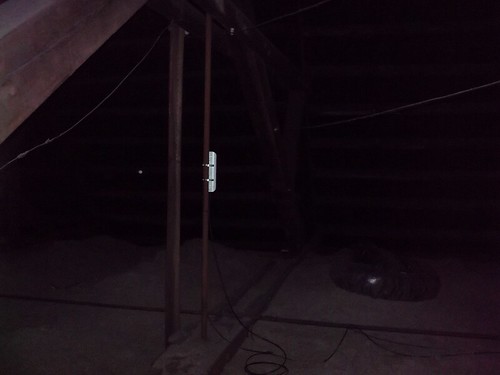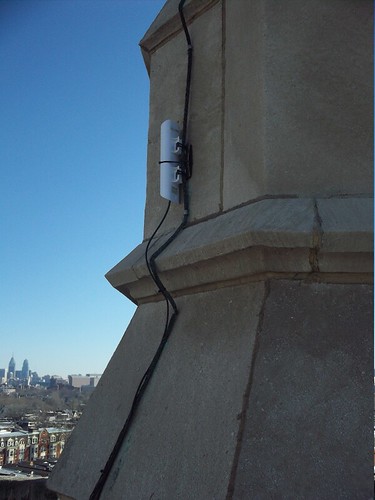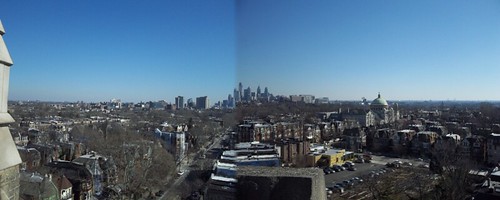The Future of Centers of Worship
Blog Post
May 2, 2012
How community focus and technology initiatives refresh our local churches, mosques and synagogues
The religious and spiritual institutions that currently anchor our neighborhoods and tie together our communities can provide us with another benefit - a chance to build and own our own communications infrastructure.
The Open Technology Institute (OTI) has partnered with Media Mobilizing Project (MMP) in West Philadelphia to start a proof-of-concept community broadband network. It will be a test site for Commotion - OTI’s open-source mesh networking technology. These mesh networks function like a game of telephone - the router on your roof connects to your neighbor’s, and then to their neighbor’s, and so on down the street until the message you wanted to send is relayed to its destination. This technology can potentially bypass the public Internet and allow neighborhoods to build their own apps, such as a community bulletin board or chat room, and they can provide broadband access to those excluded from it.
The first short-term goal in Philadelphia is to connect two computer centers - one located in MMP’s building, and the other in Philadelphia Student Union’s building a block away. The second link will hit a target further away - the Calvary Center for Culture and Community.
These locations are interesting from a historical perspective. MMP is located in the Christ Memorial Reformed Episcopal Church, which was built in 1887. It was unfortunately hit by lightning in 2004, and a long fight with the insurance company led the congregation to sell the building. It now provides office space for community organizations, and houses one of the Philadelphia Freedom Rings Partnership public computer centers. The Calvary Center for Culture and Community is based in the Calvary Methodist Episcopal Church, built in 1907. It still houses the United Methodist congregation as well as a number of non profits and arts organizations.
When it came time to install the first Commotion wireless node on the roof of MMP’s church building, it was clear things wouldn’t be easy. When we inspected the roof, access through the attic space was difficult, and the walkway on the roof itself was extremely narrow and close to the edge of the roof. There were small parapets around the edge of the roof where we planned to mount the wireless router. Unfortunately, on closer inspection it turned out that the rock they were made of was too brittle to support an antenna mount. Not surprising considering the church is over 120 years old.
So, we opted to install the wireless equipment in the attic space, firing the wireless signal right through the roof surface! This is a much simpler installation, and has the added benefits of keeping everything hidden (no objectionable eyesores), and out of the weather.
The other installation, at Calvary Church, was similarly challenging. An existing pole, which hosts local community radio station WPEB-FM, had space for our antenna, but a very large stone parapet was in the way. So, we temporarily mounted the wireless hardware to the heavy grounding cable attached to the lightning rods on the edge of the steeple. It’s not the best long-term location, but we plan on returning to add more antennas, so we will have a chance to move it soon.
After these few installations, a number of interesting things came up:
1) We were installing very new wireless equipment in very old, very beautiful religious centers.
2) These buildings had by far some of the highest points around - they were built to be impressive and tall, and have stayed that way!
3) These are more than buildings - they have long histories, close ties to the neighborhoods they are situated in, and host other strong community and arts groups.
These three points represent something more than a coincidence - they are an exciting opportunity for neighborhoods. A community organization often can’t go through the bureaucracy or pay for the cost of putting up a new tower (or renting space on an existing tower) for building their own communications infrastructure. What they can do, though, is leverage the strengths of their neighborhood - and religious institutions offer a perfect place to start, since they are already tied into the fabric of the community.
It is increasingly clear that the perfect “community anchors” for our future mesh wireless communications work are some of the oldest and most widespread institutions - religious centers. We at OTI are looking for ways to move our relationships with these institutions forward, and not just for the great views!


